Articles on Animation &Disney 08 May 2009 08:04 am
Into the Future, Past
- Back in the 80s things were starting to perk up in animated features. After a long stretch of nothing but garbage, the people at Disney started taking the form seriously, and others followed suit.
I love posting old articles that have no relevance to anything anymore, but they’re worth viewing to see how seriously we take ourselves. This is an article written by the excellent LA writer, Charles Solomon, for The Hollywood Reporter‘s animation issue: Jan. 25, 1989.
.
.
Animation Features Thrive
BY CHARLES SOLOMON
Since his death in 1966, various artists have tried to assume Walt Disney’s technical and aesthetic leadership of animation. Although no one has matched the breadth of Disney’s vision, the art form is thriving at the studio he founded nearly 70 years ago. With almost 400 artists at work, including 41 full-fledged animators, the animation division of Walt Disney Pictures is larger now than it ever was during his lifetime.
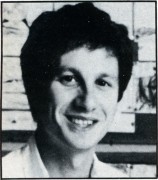 When the new management team took over the company in 1984, they announced plans for an ambitious rogram that in cluded production of a new, fully animated feature every 12 to 18 months. Disney had hoped to institute a similar schedule during the late ’30s, but the box-office failures of “Fantasia” and “Pinocchio” and the outbreak of World War II disrupted his plans.
When the new management team took over the company in 1984, they announced plans for an ambitious rogram that in cluded production of a new, fully animated feature every 12 to 18 months. Disney had hoped to institute a similar schedule during the late ’30s, but the box-office failures of “Fantasia” and “Pinocchio” and the outbreak of World War II disrupted his plans.
“I’m confident that we’ll be able to continue producing one new animated feature a year,” says Peter Schneider, vice president of feature animation at Walt Disney Pictures. “Quality versus speed is an issue we always wrestle with, and a sensitive one with the artists and myself. We continually struggle to find that balance.”
The first feature made entirely under the new leadership was “The Great Mouse Detective” (1986), an unpretentious and entertaining film that chronicled the adventures of Basil of Baker Street, a Sherlock Holmesian mouse. (Most of the work on “The Black Cauldron,” 1985, had been done under the previous administration.)
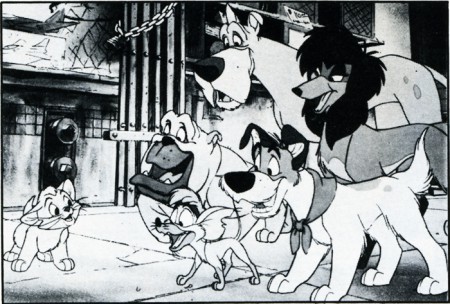
“Oliver & Co.”
The climactic confrontation between Basil and the archvil-lain, Ratigan, took place inside the clockwork mechanism of Big Ben. Computer graphics were used to create a three-dimensional world of gears and cogs, while the characters were animated by hand, an exciting example of the possibilities offered by mixing media. “Oliver & Company” (1988) included 11 minutes of computer animation of backgrounds and objects.
‘Rabbit’ Sets a Standard
The most innovative and imaginative animated film of the ’80s was the Touchstone/Amblin co-production, “Who Framed Roger Rabbit.” Directed by Bob Zemeckis, the film set a new standard for combining animation with live action and became the most successful film of 1988, grossing more than $150 million in its domestic release.
The popularity of the film led to a spate of character merchandise, and Roger appeared at the Disney theme parks and at many of the events celebrating the 60th birthday of Mickey Mouse. In the fall of 1988, the studio announced it would produce at least one “Maroon Cartoon” short starring Roger Rabbit and Baby Herman, and there were widespread rumors that a sequel was in the works.
“As it was in the past, the goal of the animation department is to create characters that live beyond their movies,” says Schneider. “With Roger, we’ve certainly created a character who’s entered the American lexicon: For the first time we’ve created a new character that has the potential to become a Mickey Mouse. I think you’re going to see a lot activity over the next five years for Roger: Over time, we hope to build him into a character as big as Mickey.”
“Obviously there’s been talk about a sequel to ‘Roger Rabbit,’ but the project really is in the talking phase right now,” adds animation producer Don Hahn. “A lot of people would like to do a sequel, but we’re still trying to recuperate and evaluate the plans for Roger. Sure, it’d be great to do another one, but it’s just too early to say.”
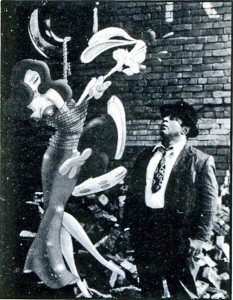 The success of “Roger Rabbit” has tended to overshadow “Oliver & Company,” a feature based loosely on Dickens’ “Oliver Twist.” The title character became an orphan kitten in contemporary New York City, and Fagin’s gang of pickpockets was transformed into a pack of stray dogs led by the super-cool Dodger. The upbeat tone, broader, cartoon-style animation and celebrity vocal cast (including Billy Joel, Bette Midler and Cheech Marin) placed the film in the tradition of “The Jungle Book” (1967) rather than “Pinocchio.”
The success of “Roger Rabbit” has tended to overshadow “Oliver & Company,” a feature based loosely on Dickens’ “Oliver Twist.” The title character became an orphan kitten in contemporary New York City, and Fagin’s gang of pickpockets was transformed into a pack of stray dogs led by the super-cool Dodger. The upbeat tone, broader, cartoon-style animation and celebrity vocal cast (including Billy Joel, Bette Midler and Cheech Marin) placed the film in the tradition of “The Jungle Book” (1967) rather than “Pinocchio.”
“Oliver & Company” opened in November 1988 to favorable reviews (in Time, Richard Corliss called it “the snazziest Disney cartoon since Walt died”) and good business. The film earned a very respectable $20 million in the first four weeks of its domestic release.
Disney’s next feature will be “The Little Mermaid” in late 1989. The writers have lightened the melancholy tone of the original Hans Christian Andersen story, and added seven songs by Howard Ashman and Alan Menken (“Little Shop of Horrors”). Previewed animation from the film looks impressive, and the animators are excited about their work.
” ‘Little Mermaid’ is definitely on track for Christmas of ’89,” says Schneider. “I think the quality of animation is up sub stantially from anything we’ve done before. You have to realize that we have a very young staff — most of the people real ly started animating on ‘The Great Mouse Detective.’ They got through that experience, then jammed through ‘Oliver’ learned some more in the process, and have now hit their stride as artists.”
Many of the top artists from the international crew who animated “Roger Rabbit” in London joined the Disney staff in Glendale and went to work on “Little Mermaid” when the production ended. This influx of artists helped to bring the animation staff to its current record level.
Building the Animation Staff
“It takes a long while to pick uf the particular subtleties that define a Disney animator,” observes Schneider. “The artists from London are extremely good animators, but they’re a little more accustomed to working in a more Warner Bros./Tex Avery style. Animators like Tom Sito, Chuck Harvey and Nik ‘ Ranieri are really starting to come along and I think they’ll hit their stride on the next picture. But for now, it’s our older artists — Glen Keane, Mark Henn, Reuben Aquino — who are really pulling this picture through.”
Slated to follow “Mermaid” in 1990 is “The Rescuers Down Under,” starring Bernard and Bianca, the mice from the popular comedy-adventure “The Rescuers” (1977). Although the Disney artists sometimes reused characters from the features (e.g. Jimiiny Cricket), “Down Under” represents the studio’s first sequel to an animated feature.
“We’ve never done a sequel before, but I think the appeal of the Bernard and Bianca characters justifies the departure,” says Schneider. “I think the film is going tosurprise a lot of peo pie with its warmth, its heart and its comedy. We’ve found a new setting and added some new characters: Jake, the kangaroo mouse; a really great Disney villain, McLeach; and his sidekick, Fenton.”
“Down Under” will be directed by two supervising animators from “Oliver &, Company,” Hendel Butoy and Mike Gabriel. (Butoy did the key animation of Tito, the hyperactive Chihuahua; Gabriel designed the characters and did animation of both Dodger and Oliver.) The decision to promote two of the studio’s best animators to director indicates that the pool of well-trained young artists remains small.
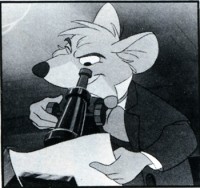 “I would say the biggest difficulty we face in the industry is finding experienced, qualified directors for our animated projects,” says Schneider. “We don’t see the kind of talent we’d like on the outside, so we’ve been taking staff artists who understand the Disney way and giving them the opportunity to fcdirect Disney pictures.
“I would say the biggest difficulty we face in the industry is finding experienced, qualified directors for our animated projects,” says Schneider. “We don’t see the kind of talent we’d like on the outside, so we’ve been taking staff artists who understand the Disney way and giving them the opportunity to fcdirect Disney pictures.
“Promoting from within does ^nean we’re robbing our core animation group to get directors,” he continues. “But I think having an artist like Hendel directing helps the animators improve: Everyone he worked with on ‘Oliver’ took a leap forward. I hope the same thing will happen as he and Mike direct ‘Down Under/ that they’ll bring the staff a notch further, and more than replace the animation they might otherwise do.”
“The Rescuers Down Under” will be followed by “Beauty and the Beast,” tentatively scheduled for 1991. The film is currently in preproduction, and experimental animation will begin in early 1989. Studio veteran Mel Shaw has done inspirational artwork for the film, and Schneider and Hahn agree that his handsome pastel drawings have set the style for the film and excited the animators about it.
To supplement the new features, Disney will continue to reissue its early classics. A special rerelease is planned for “Fantasia” in 1990 to mark the 50th anniversary of its premiere. For the occasion, the original Sto-kowski soundtrack is being restored with digital audio technology to replace the new soundtrack that film conductor Irwin Kostel and a pickup orchestra recorded in 1982.
“I think a lot of people have forgotten that ‘Fantasia’ really was a creative collaboration be tween Leopold Stokowski and Walt Disney,” says Hahn. “While the Kostel score was a great effort, you can’t retrofit something that was so tightly put together at that time. We’ve gone back to the original camera negatives, and when you see the film again, it will be in all its original splendor.”
A Force in TV
Disney has also become a force in the television cartoon market: The studio began producing Saturday morning animation in Japan with “The Wuzzles” and “Gummi Bears” in 1985. “The New Adventures of Winnie the Pooh” debuted on ABC in 1988. “DuckTales” (1987) remains the most successful cartoon show in syndication, and another syndicated series, “Chip and Dale’s Rescue Rangers,” is scheduled to debut in fall 1989. (The generally high quality of the Disney TV cartoons is balanced against the egregious live action/animation specials made for the studio by Joie Albrecht and Scot Garen.)
In April, Disney will open a second animation facility in Orlando, Fla., as part of the Disney/MGM Studios. A staff of approximately 90 artists will animate the classic Disney characters — Mickey Mouse, Donald Duck, Goofy, et al. — in a series of featurettes. The first film in the series will be either “Mickey’s Arabian Adventure” or “Mickey and the Emperor’s New Clothes.”
“The Florida studio is both exciting and extremely difficult,” says Schneider. “Six of our top artists are going there to head the staff; we’ll fill the rest of the positions with people from various schools and professionals from around the country. We’re hoping to expand both the need and the opportunities for young animators, which will only help us in California.”
The artists’ offices in the new building have glass walls that will enable visitors on the studio tour to see how an animated film is made. Jerry Rees (“The Brave Little Toaster”) is directing a series of short live-action/ animation films that explain the animation process. Robin Williams, Walter Cronkite, Walt Disney Co. chairman Michael Eisner, Roger Rabbit and Mickey Mouse provide the narration.
As he considers the possibilities of the expanded production facilities and schedule, Schneider grows thoughtful. “It’s my goal that each time we do a picture we get better at the craft of making movies,” he concludes. “I think the group of people that includes myself, Jeffrey (Katzenberg), Roy (Disney) and the animators really has the opportunity to set the agenda for animation for the next 50 years, as the older group of artists set it for Walt’s generation.” -k
Charles Solomon’s next book, Enchanted Drawings: A History of Animation in America, will be published by Alfred A. Knopf in fall 1989.
As a followup sometime, I’m planning to post an extremely long article from the NY TImes Magazine about the Bluth rebellion away from the Disney mainstream. It’ll take a while to put together.
For now, here’s an attractive ad from that very same issue of The Hollywood Reporter.
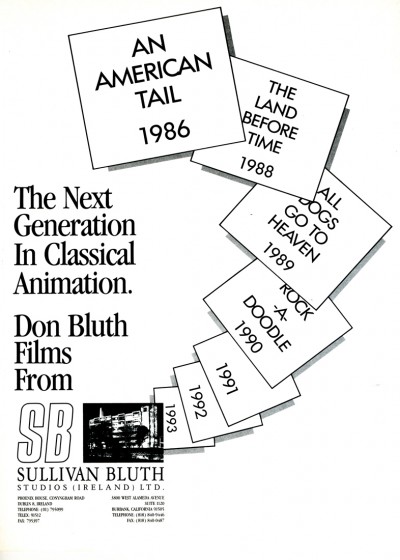

on 09 May 2009 at 7:45 am 1.Stephen Macquignon said …
I remember the excitement during this time, it felt to me that the industry doors was opening up and every body was going to get a piece of the pie
on 09 May 2009 at 1:21 pm 2.Tim Hodge said …
So many plans changed for the Florida studio. The first idea was that they would produce Mickey, Donald & Goofy shorts. Then with the success of Roger Rabbit, they embarked on a slate of those films (eventually completing 3 titles). Then when the Burbank studio got behind schedule on “Rescuers 2″, they got to help out with feature animation, eventually producing 3 features on their own before the bubble burst and upper management closed the doors and got a big bonus for saving so much money.
on 15 May 2009 at 5:09 am 3.sarah said …
That was a brilliant idea to make the viewers interested in cartoons . Adding animations in the old cartoons specifically excited kids , as they could have more real feelings of their beloved characters
on 19 May 2009 at 4:26 am 4.Tony W. said …
“I think the group of people that includes myself, Jeffrey (Katzenberg), Roy (Disney) and the animators really has the opportunity to set the agenda for animation for the next 50 years, as the older group of artists set it for Walt’s generation.â€
It didn’t turn out quite the way that they wanted it.
on 14 Apr 2010 at 2:47 am 5.OX Lyrics - Sing for strong | ConcerningLyrics.info said …
[...] Michael Sporn Animation – Splog » Into the Future, Past [...]